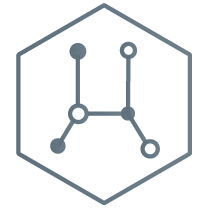Project Description:
Actin is one of the most abundant proteins in cells. It has the ability to polymerize into long filaments out of monomers (single proteins). These filaments form a fibrous network within cells called the "cytoskeleton". The cytoskeleton provides cells with mechanical integrity and shape. Through the fast assembly and disassembly of the the cytoskeleton fibers, cells can change shape, move and divide.
Our team focuses on quantitative analysis and modeling of cytoskeletal organization in vitro and in living cells. Our work is based on images of fluorescently labeled actin filaments provided to us by experimental collaborators. We have recently developed software which extracts and tracks growing actin filaments on a glass slide (two dimensions). Our summer 2010 BDSI project focuses on developing computational methods and software for analysis of actin cytoskeleton networks in three dimensional images obtained by confocal microscopy.
We will further generalize methods of describing individual filaments to describe networks of filaments. The improved software will be used to systematically analyze actin cables in live yeast cells. In particular, we will quantify bending and torsional statistics of actin bundles which relate to the mechanical properties of actin filaments. In this way, we aim to obtain results that provide insight into the mechanisms of actin assembly and the mechanical forces involved.
Project Year:
2010
Team Leaders:
Xiaolei Huang, Ph.D., Computer Science & Engineering
Dimitrios Vavylonis, Ph.D., Physics
Graduate Students:
Nikola Ojkic
Tian Shen
Undergraduate Students:
Jennifer Colquhoun
Christopher Devulder
Peter Wallerson





